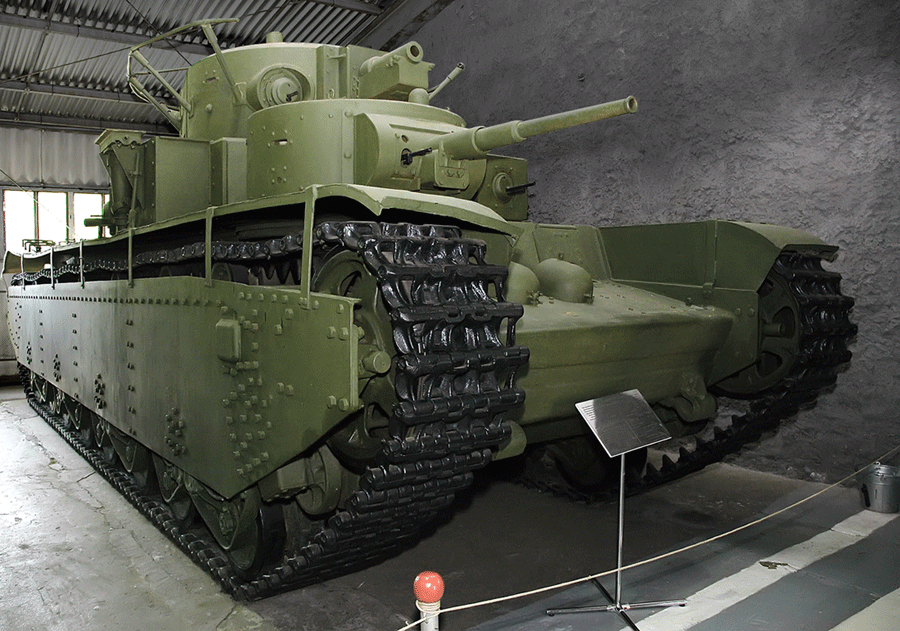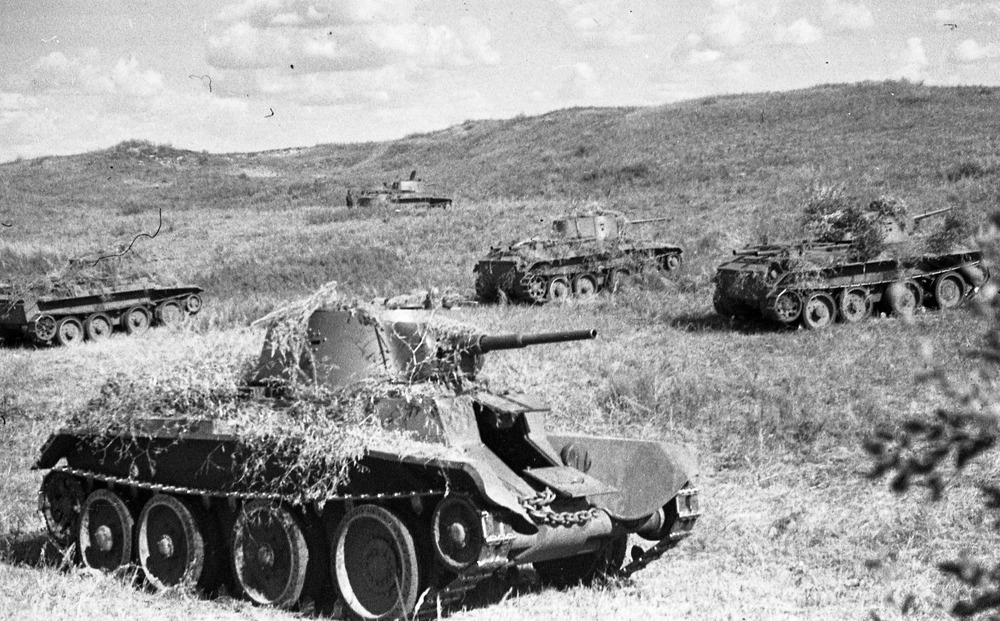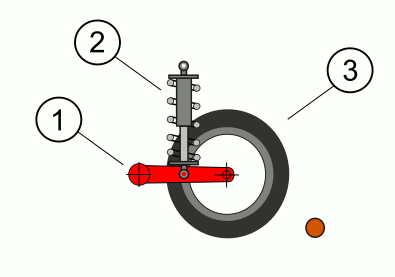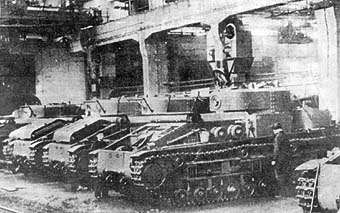|
OKMO
OKMO (''Opytniy Konstruktorsko-Mekhanicheskiy Otdel'', 'Experimental Design Mechanical Department') was the tank design team in the Soviet Union during the early 1930s. Located in Leningrad, it produced the design of the T-26 infantry tank, of which about 12,000 would be produced. Most other designs from the bureau never saw the light of day, but it was here that Mikhail Koshkin, designer of the famous T-34 medium tank gained his early experience. The bureau was gutted in the Great Purge and broken up by the beginning of the Second World War. History Organizational In 1930 the Bolshevik Factory No. 232 became home to the AVO-5 tank design bureau, soon renamed OKMO. In 1932, the tank department of the Bolshevik factory, became the new Factory No. 174 (K.E. Voroshilov). This new, independent enterprise was dedicated to the mass production of T-26 tank. Janusz Magnuski says that in 1932 one of the former departments of the Bolshevik factory became a base for the new indepe ... [...More Info...] [...Related Items...] OR: [Wikipedia] [Google] [Baidu] |
T-35 Heavy Tank
The T-35 was a Soviet Union, Soviet multi-gun turret, turreted heavy tank of the interwar period and early Second World War that saw limited service with the Red Army. Often called a land battleship, it was the only five-turreted heavy tank in the world to reach production, but proved to be slow and mechanically unreliable. Most of the T-35 tanks still operational at the time of Operation Barbarossa were lost due to mechanical failure rather than enemy action. It was designed to complement the contemporary T-28 (medium tank), T-28 medium tank; however, very few were built. Outwardly, it was large; but internally, the spaces were cramped with the fighting compartments separated from each other. Some of the turrets obscured the entrance hatches. Production history The T-35 was developed by the OKMO design bureau of the Bolshevik Factory, which began work on a heavy tank in 1930. Two teams developed separate designs. The team headed by German engineer Grotte worked on the 100-ton ... [...More Info...] [...Related Items...] OR: [Wikipedia] [Google] [Baidu] |
T-37 Amphibious Scout Tank
The T-37A was a Soviet Amphibious vehicle, amphibious light tank. The tank is often referred to as the T-37, although that designation was used by a different tank which never left the prototype stage. The T-37A was the first series of mass-produced fully amphibious tanks in the world. The tank was first created in 1932, based on the British Vickers tankette and other operational amphibious tanks. The tank was mass-produced starting in 1933 up until 1936, when it was replaced with the more modern T-38 tank, T-38, based on the T-37A. Overall, after four years of production, 2552 T-37As were produced, including the original prototypes. In the Red Army, they were used to perform tasks in communication, reconnaissance, and as defense units on the march, as well as active infantry support on the battlefield. The T-37A was used in large numbers during the Soviet invasion of Poland and in the Winter War against Finland. T-37As were also used by the Soviets in the beginning of the Grea ... [...More Info...] [...Related Items...] OR: [Wikipedia] [Google] [Baidu] |
T-26 Tank
The T-26 tank was a Soviet light tank used during many conflicts of the Interwar period and in World War II. It was a development of the British Vickers 6-Ton tank and was one of the most successful tank designs of the 1930s until its light armour became vulnerable to newer anti-tank guns.Franco, ''El Tanque de la Guerra Civil Española'', p. 74. It was produced in greater numbers than any other tank of the period, with more than 11,000 units manufactured giving it the title of the most produced tank during the interwar period. During the 1930s, the USSR developed 53 variants of the T-26, including flame-throwing tanks, combat engineer vehicles, remotely controlled tanks, self-propelled guns, artillery tractors, and armoured carriers. Twenty-three of these were series-produced, others were experimental models. The T-26 and BT were the main tanks of the Red Army's armoured forces during the interwar period. The T-26 was the most important tank of the Spanish Civil War and pla ... [...More Info...] [...Related Items...] OR: [Wikipedia] [Google] [Baidu] |
SU-100Y
The SU-100Y, initially designated T-100Y,Pasholok was a Soviet prototype self-propelled gun, developed from the chassis of the prototype T-100 tank. It was developed during the Winter War with Finland to include a 130 mm gun to destroy concrete defensive structures like bunkers and anti-tank obstacles along with the use as a tank destroyer. It did not see serial production. Development In December 1939, the Northwest Command of the Red Army requested that the N°185 factory develop a vehicle based on the T-100. The vehicle had not only to operate as a self-propelled gun, but also to be used to lay bridges, transport explosives, and recover tanks destroyed or damaged on the battlefield. During the development of this vehicle, the ABTU proposed mounting the large, high velocity 152 mm cannon on the T-100 in order to give it the capacity to destroy bunkers and other strong fixed fortifications. The plant manager at N°185 proposed stopping development of the prototype to ... [...More Info...] [...Related Items...] OR: [Wikipedia] [Google] [Baidu] |
T-26
The T-26 tank was a Soviet light tank used during many conflicts of the Interwar period and in World War II. It was a development of the British Vickers 6-Ton tank and was one of the most successful tank designs of the 1930s until its light armour became vulnerable to newer anti-tank guns.Franco, ''El Tanque de la Guerra Civil Española'', p. 74. It was produced in greater numbers than any other tank of the period, with more than 11,000 units manufactured giving it the title of the most produced tank during the interwar period. During the 1930s, the USSR developed 53 variants of the T-26, including flame-throwing tanks, combat engineer vehicles, remotely controlled tanks, self-propelled guns, artillery tractors, and armoured carriers. Twenty-three of these were series-produced, others were experimental models. The T-26 and BT were the main tanks of the Red Army's armoured forces during the interwar period. The T-26 was the most important tank of the Spanish Civil War and pl ... [...More Info...] [...Related Items...] OR: [Wikipedia] [Google] [Baidu] |
T-26 Light Infantry Tank
The T-26 tank was a Soviet light tank used during many conflicts of the Interwar period and in World War II. It was a development of the British Vickers 6-Ton tank and was one of the most successful tank designs of the 1930s until its light armour became vulnerable to newer anti-tank guns.Franco, ''El Tanque de la Guerra Civil Española'', p. 74. It was produced in greater numbers than any other tank of the period, with more than 11,000 units manufactured giving it the title of the most produced tank during the interwar period. During the 1930s, the USSR developed 53 variants of the T-26, including flame-throwing tanks, combat engineer vehicles, remotely controlled tanks, self-propelled guns, artillery tractors, and armoured carriers. Twenty-three of these were series-produced, others were experimental models. The T-26 and BT were the main tanks of the Red Army's armoured forces during the interwar period. The T-26 was the most important tank of the Spanish Civil War and pla ... [...More Info...] [...Related Items...] OR: [Wikipedia] [Google] [Baidu] |
Chelyabinsk
Chelyabinsk; , is the administrative center and largest types of inhabited localities in Russia, city of Chelyabinsk Oblast, Russia. It is the List of cities and towns in Russia by population, seventh-largest city in Russia, with a population of over 1.1 million people, and the second-largest city in the Ural Federal District, after Yekaterinburg. Chelyabinsk is located to the east behind the south part of the Ural Mountains and runs along the Miass (river), Miass River. The area of Chelyabinsk contained the ancient settlement of Arkaim, which belonged to the Sintashta culture. In 1736, a fortress by the name of Chelyaba was founded on the site of a Bashkirs, Bashkir village. Chelyabinsk was granted town status by 1787. Chelyabinsk began to grow rapidly by the early 20th century as a result of the construction of railway links from the European Russia, Russian core to Siberia, including the Trans-Siberian Railway. Its population reached 70,000 by 1917. Under the Soviet Union, C ... [...More Info...] [...Related Items...] OR: [Wikipedia] [Google] [Baidu] |
Semyon Alexandrovich Ginzburg
Semyon Alexandrovich Ginzburg () (1900–1943) was a Soviet tank designer. He enrolled in business school in 1918, but then volunteered for the Red Army in 1919 and served in the light artillery squadron of the 3rd Rifle Division (Soviet Union), 3rd Rifle Division. After the division had retreated to Voronezh, Ginzburg enrolled in the Peter the Great Military Academy of the Strategic Missile Forces, Mikhailovsky Artillery Academy and graduated in 1920. He was appointed as a platoon commander in the 52nd Rifle Division and fought at Kakhovka and in Crimea. He continued his studies at the Dzerzhinsky Military Academy, Dzerzhinsky Military Technology Academy in 1926 and graduated in 1929 after specializing in tank designs. He was one of the earliest tank designers in the Soviet Union who expressly studied to become one. He worked in the GKB (the main design bureau) and in the KB-3 in Moscow. In 1930 he was a member of the Soviet purchasing committee in Great Britain that prepared bu ... [...More Info...] [...Related Items...] OR: [Wikipedia] [Google] [Baidu] |
BT Fast Tank
The BT tank (, lit. "fast moving tank" or "high-speed tank") was one of a series of Soviet light tanks produced in large numbers between 1932 and 1941. They were lightly armoured, but reasonably well-armed for their time, and had the best mobility of all contemporary tanks. The BT tanks were known by the nickname ''Betka'' from the acronym, or by its diminutive ''Betushka''. The successor of the BT tanks was the famous T-34 medium tank, introduced in 1940, which would replace all of the Soviet fast tanks, infantry tanks, and light tanks in service. Design The BT tanks were "convertible tanks". This was a feature that was designed by J. Walter Christie to reduce wear of the unreliable tank tracks of the 1930s. In about thirty minutes, the crew could remove the tracks and engage a chain drive to the rearmost road wheel on each side, allowing the tank to travel at very high speeds on roads. In wheeled mode, the tank was steered by pivoting the front road wheels. According to histo ... [...More Info...] [...Related Items...] OR: [Wikipedia] [Google] [Baidu] |
Kubinka
Kubinka () is a types of inhabited localities in Russia, town in Odintsovsky District of Moscow Oblast, Russia, located on the Setun River, west of Moscow. Population: __TOC__ History Kubinka, founded in the 15th century, may have been named after Prince , a prominent local land-owner who died in 1546. It grew in importance in the second half of the 19th century when the Moscow-Smolensk railway passed through the area. The military test-range for tanks opened in 1931 and the military airbase opened soon afterwards. In December 1941 the Red Army halted the Wehrmacht's Battle of Moscow, drive towards Moscow on the outskirts of Kubinka. Kubinka gained town status in 2004. Administrative and municipal status Within the subdivisions of Russia#Administrative divisions, framework of administrative divisions, it is, together with twenty-three types of inhabited localities in Russia, rural localities, incorporated within Odintsovsky District as the Town of district significance, Town ... [...More Info...] [...Related Items...] OR: [Wikipedia] [Google] [Baidu] |
Christie Suspension
The Christie suspension is a suspension system developed by American engineer J. Walter Christie for his tank designs. It allowed considerably longer movement than conventional leaf spring systems then in common use, which allowed his tanks to have considerably greater cross-country speed. The system was first introduced on his M1928 design, and used on all of his designs until his death in 1944. History Christie advocated the use of lightweight tanks with long range and high speed, designed to penetrate enemy lines and attack their infrastructure and logistics capabilities. A major problem with tanks in World War I was tracked suspension failure. Christie's first tank design of 1919 could be driven on its wheels to get to the starting point and then the tracks fitted before it went into action. The US Tank Corps ordered a single tank from Christie's company based on this design. The tank, known as the M1919, was delivered in early 1921 and tested until Christie propos ... [...More Info...] [...Related Items...] OR: [Wikipedia] [Google] [Baidu] |
T-28 (medium Tank)
The T-28 was a Soviet multi-turreted medium tank. The prototype was completed in 1931, and production began in late 1932. It was an infantry support tank intended to break through fortified defences. The T-28 was designed to complement the heavier T-35 (also multi-turreted), with which it shared turret designs. The type did not have great success in combat, but it played an important role as a development project for Soviet tank designers. A series of new ideas and solutions that were tried out on the T-28 were later incorporated in future models. Design history The T-28 was in many ways similar to the British Vickers A1E1 Independent tank, which greatly influenced tank design in the period between the wars, even though only a single prototype was manufactured in 1926. The Kirov Factory in Leningrad began manufacturing a tank that was based on the design of the British Independent in 1932. The T-28 tank was officially approved on 11 August 1933. The T-28 had one large turr ... [...More Info...] [...Related Items...] OR: [Wikipedia] [Google] [Baidu] |








